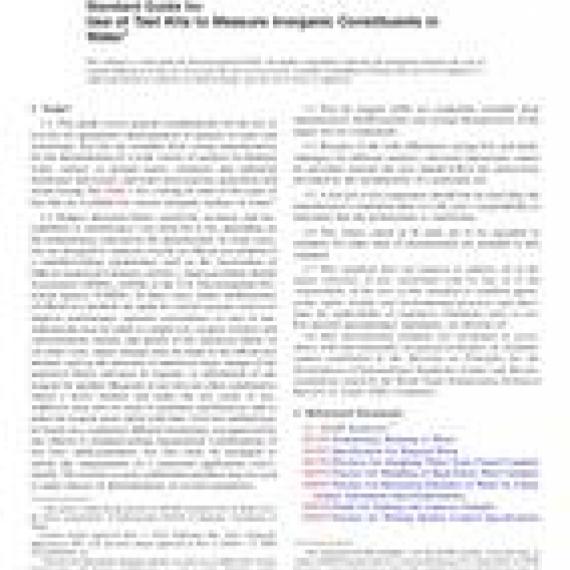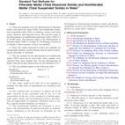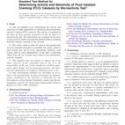No products
ASTM D5463-18
ASTM D5463-18 Standard Guide for Use of Test Kits to Measure Inorganic Constituents in Water
standard by ASTM International, 05/01/2018
Full Description
1.1This guide covers general considerations for the use of test kits for quantitative determination of analytes in water and wastewater. Test kits are available from various manufacturers for the determination of a wide variety of analytes in drinking water, surface or ground waters, domestic and industrial feedwaters and wastes, and water used in power generation and steam raising. See Table 1 for a listing of some of the types of kits that are available for various inorganic analytes in water.2
(A)Kit Methodology: A=appearance/turbidity, C=visual colorimetric, GNG=go no go, P=photometric, and T=titrimetric.1.2Ranges, detection limits, sensitivity, accuracy, and susceptibility to interferences vary from kit to kit, depending on the methodology selected by the manufacturer. In some cases, kits are designed to replicate exactly an official test method of a standard-setting organization such as the Association of Official Analytical Chemists (AOAC), American Public Health Association (APHA), ASTM, or the U.S. Environmental Protection Agency (USEPA). In other cases, minor modifications of official test methods are made for various reasons, such as to improve performance, operator convenience, or ease of use. Adjustments may be made to sample size, reagent volumes and concentrations, timing, and details of the analytical finish. In yet other cases, major changes may be made to the official test method, such as the omission of analytical steps, change of the analytical finish, omission of reagents, or substitution of one reagent for another. Reagents in test kits are often combined to obtain a fewer number and make the test easier to use. Additives may also be used to minimize interferences and to make the reagent more stable with time. A kit test method may be based on a completely different technology, not approved by any official or standard-setting organization. Combinations of test kits-multi-parameter test kits-may be packaged to satisfy the requirements of a particular application conveniently. The test kits in such combination products may be used to make dozens of determinations of several parameters.
1.3Test kit reagent refills are commonly available from manufacturers. Refills permit cost savings through reuse of the major test kit components.
1.4Because of the wide differences among kits and methodologies for different analytes, universal instructions cannot be provided. Instead, the user should follow the instructions provided by the manufacturer of a particular kit.
1.5A test kit or kit component should not be used after the manufacturer's expiration date; it is the user's responsibility to determine that the performance is satisfactory.
1.6The values stated in SI units are to be regarded as standard. No other units of measurement are included in this standard.
1.7This standard does not purport to address all of the safety concerns, if any, associated with its use. It is the responsibility of the user of this standard to establish appropriate safety, health, and environmental practices and determine the applicability of regulatory limitations prior to use. For specific precautionary statements, see Section 10.
1.8This international standard was developed in accordance with internationally recognized principles on standardization established in the Decision on Principles for the Development of International Standards, Guides and Recommendations issued by the World Trade Organization Technical Barriers to Trade (TBT) Committee.


































